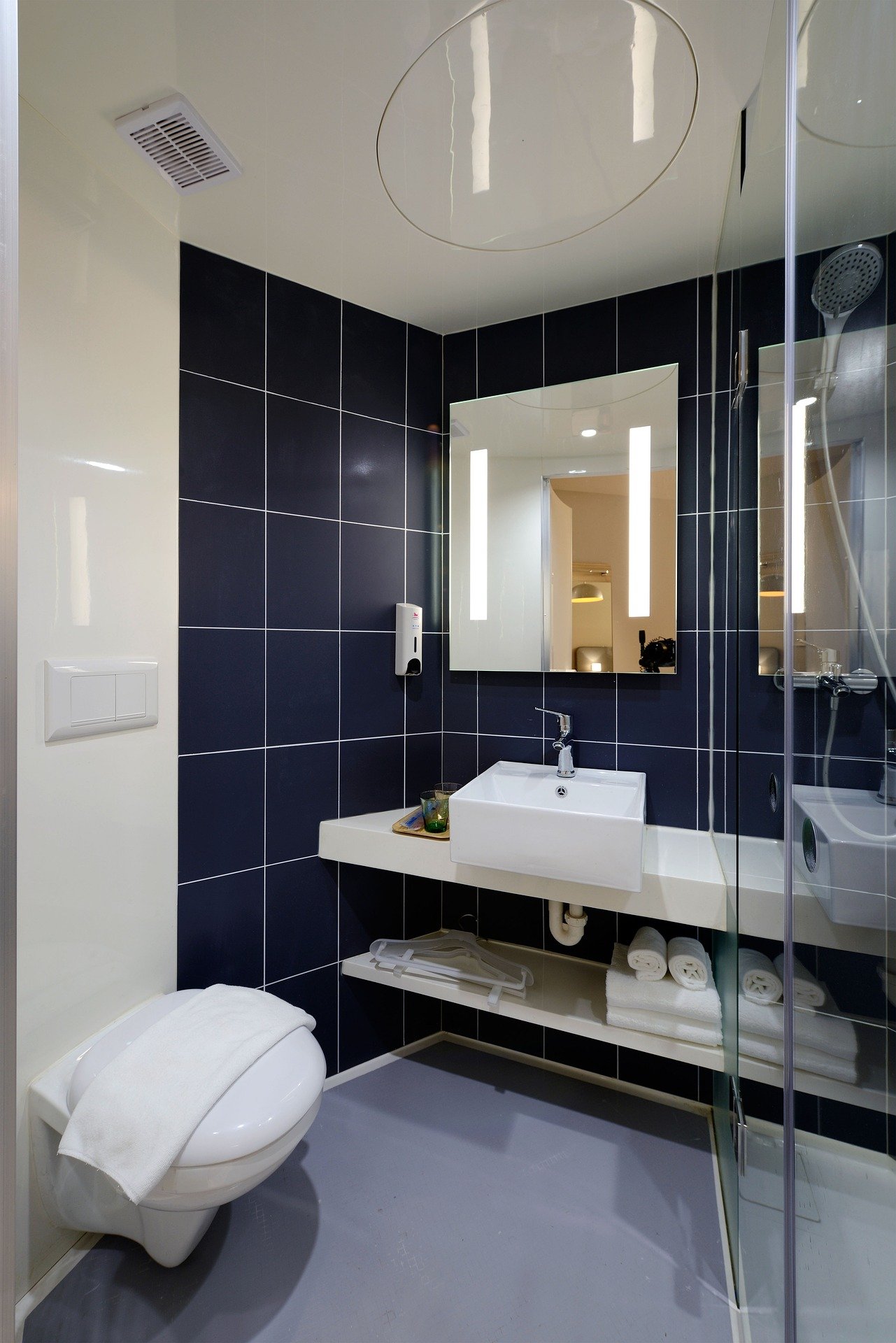How to Replace Bathroom Fan: Step-by-Step Guide
Need to replace your bathroom fan? Our comprehensive guide walks you through the process step by step, ensuring you can complete the task efficiently and safely.
Let’s face it: a functional bathroom fan is one of those things you don’t really appreciate until it stops working. When that happens, your bathroom can quickly turn into a steamy, smelly mess. But before you call a professional, consider this—replacing a bathroom fan is something you can likely handle on your own. With the right tools and a bit of guidance, you’ll have your new fan installed in no time, and your bathroom back to its fresh, ventilated self. So, let's dive into the nitty-gritty of how to replace a bathroom fan without breaking a sweat.
Why Replace Your Bathroom Fan?
1. Improved Air Quality
Bathroom fans are crucial for maintaining good air quality in a moisture-prone environment. If your fan isn’t performing well, you might experience persistent dampness or even mold growth, leading to potential health issues. Replacing an old, ineffective fan with a new one can significantly improve ventilation, reducing moisture and odors. This upgrade not only helps prevent mold but also keeps your bathroom more comfortable and pleasant, contributing to a healthier living space overall.
2. Energy Efficiency
Older bathroom fans can be energy hogs, consuming more electricity than necessary. Upgrading to a modern, energy-efficient model can save you money on your electricity bill over time. In addition to being more cost-effective, newer fans are often much quieter, eliminating the noisy interruptions that can disrupt a relaxing bath. This simple upgrade not only reduces energy consumption but also enhances the overall comfort and tranquility of your bathroom environment.
3. Aesthetic Upgrade
Let’s be honest—bathroom fans aren’t usually the most stylish fixtures. If your fan is outdated or clashes with your bathroom’s decor, replacing it with a sleek, modern version can provide a subtle but effective facelift. A new fan not only improves ventilation but also enhances the aesthetic of your space, making your bathroom look more cohesive and up-to-date. This small change can make a big difference in the overall feel of your bathroom.
Tools You’ll Need
Before you get started, make sure you have the following tools on hand:
Screwdriver (flathead and Phillips)
Wire nuts
Wire stripper/cutter
Voltage tester
Utility knife
Drill with bits
Pliers
Ladder or step stool
Safety glasses
Dust mask
Having the right tools at your disposal will make the process much smoother and help you avoid any unnecessary trips to the hardware store.
How to Replace Bathroom Fan: Step-by-Step Guide
Step 1: Turn Off the Power
First things first—safety! Before you start working on your bathroom fan, ensure the power is turned off at the circuit breaker. Don’t just rely on the wall switch; you need to be absolutely certain that no electricity is flowing to the fan. Use a voltage tester to double-check that the power is off before proceeding. This step is crucial to avoid any risk of electric shock while you’re working on the fan. Safety should always be your top priority.
Step 2: Remove the Old Fan Cover
With the power off, it’s time to get your hands dirty. Climb up on your ladder and carefully remove the old fan cover. Most covers are secured with metal clips or screws, so use a screwdriver or your hands to release it. Once the cover is off, set it aside—you won’t need it again unless you’re planning to reuse it. This step gives you access to the fan and housing, allowing you to proceed with the replacement or cleaning.
Step 3: Disconnect the Fan Wiring
Once the cover is off, you’ll see the fan housing and wiring. This is where it gets a bit technical. Use your screwdriver to remove the screws holding the fan in place. Carefully pull the fan down and disconnect the wiring. You’ll likely see three wires: a black (hot) wire, a white (neutral) wire, and a green or bare (ground) wire. Take note of how they’re connected before disconnecting them—snapping a quick photo can be helpful for reference later.
Step 4: Remove the Old Fan Housing
After disconnecting the wiring, the next step is to remove the fan housing. It may be attached to the ceiling joists with screws or held in place by brackets. Use a screwdriver or drill to remove all screws and fasteners securing the housing. Once freed, carefully pull the housing out of the ceiling. You might need to wiggle it slightly, especially if it has been installed for a while. Take care to avoid damaging the ceiling as you remove the housing, preparing the area for the new fan installation.
Step 5: Prepare the New Fan Housing
With the old fan removed, it’s time to prep the new one. First, compare the size of the new fan housing to the hole in your ceiling. If the new fan is larger, carefully enlarge the hole with a utility knife. If it’s smaller, you may need to patch the ceiling or install additional support brackets to ensure a secure fit. Taking the time to properly adjust the ceiling hole will ensure a smooth installation and optimal performance of your new bathroom fan.
Step 6: Install the New Fan Housing
With everything prepped, it’s time to install the new fan. Slide the housing into the ceiling hole and align it with the joists. Secure the housing to the ceiling joists using screws or brackets, following the manufacturer’s instructions. Ensure the fan is snug and stable—nobody wants a shaky or insecure fan overhead! Double-check that it’s firmly in place before moving on to the wiring. A secure installation is key to both safety and the fan's long-term performance.
Step 7: Reconnect the Wiring
With the new housing in place, it’s time to reconnect the wiring. Match the black wire from the fan to the black wire in the ceiling, the white wire to the white wire, and the green or bare wire to the ground wire. Use wire nuts to securely connect each pair of wires, ensuring a tight and safe connection. Gently tuck the wired connections back into the housing, making sure they’re well-organized and not pinched before proceeding with reattaching the fan cover.
Step 8: Attach the New Fan Motor
With the wiring sorted, it’s time to install the new fan motor. Follow the manufacturer’s instructions for securing the motor into the housing. This typically involves aligning the motor with the mounting brackets or screws and fastening it into place. Ensure the motor is securely attached and properly connected to the wiring you just completed. Double-check that all connections are tight and that the motor is stable before moving on to reinstalling the fan cover and finalizing the installation.
Step 9: Test the Fan
Before closing everything up, it’s time for the moment of truth. Return to your circuit breaker and turn the power back on. Flip the bathroom fan switch to see if the fan operates correctly. If it starts up and runs smoothly, you’re in the clear! If not, turn the power off again and carefully double-check your wiring connections to ensure everything is correctly connected. It’s crucial to address any issues before finishing the installation to ensure proper function and safety.
Step 10: Install the New Fan Cover
Once you’re confident that everything is functioning properly, install the new fan cover. It should snap or screw into place just like the old one. Ensure that the cover is securely fastened and flush with the ceiling to provide a clean, finished look. Double-check that there are no gaps or loose edges, as a well-installed cover not only enhances the appearance but also ensures optimal performance and safety of your new bathroom fan.
Step 11: Clean Up
Finally, clean up your workspace. Dispose of the old fan properly, wipe down any dust or debris, and store your tools in their designated places. Take a moment to step back and admire your work—you’ve successfully replaced the bathroom fan! Ensuring your workspace is tidy not only creates a more pleasant environment but also helps you keep track of any leftover materials or tools. Enjoy the improved ventilation and look of your newly updated bathroom fan!
Conclusion
And there you have it—a comprehensive guide on how to replace a bathroom fan. It might seem like a daunting task at first, but with the right tools and a bit of patience, you can get the job done and enjoy a fresher, more comfortable bathroom. Remember, safety comes first, so always double-check your work and consult a professional if you’re unsure about any step. Happy DIYing!
Frequently Asked Questions
Q: Do I need to hire an electrician to replace a bathroom fan?
A: Not necessarily. If you’re comfortable working with basic wiring and have some DIY experience, you can likely replace a bathroom fan on your own. However, if you’re not confident in your electrical skills, it’s always a good idea to consult a professional.
Q: How long does it take to replace a bathroom fan?
A: The entire process typically takes about 2-4 hours, depending on your experience level and the complexity of the installation.
Q: Can I replace just the fan motor without changing the housing?
A: In some cases, yes. If your fan housing is still in good condition, you might be able to replace just the motor. However, if the fan is very old or if the housing is damaged, it’s best to replace the entire unit.
Q: What should I do if my new fan is still noisy?
A: If your new fan is noisy, double-check that it’s securely mounted and that there’s no debris caught in the motor. Sometimes, a noisy fan can be due to loose screws or an unbalanced motor.
Q: Can I install a fan with a higher CFM rating than my old one?
A: Yes, installing a fan with a higher CFM (cubic feet per minute) rating can improve ventilation in your bathroom. Just make sure your ductwork can handle the increased airflow.




